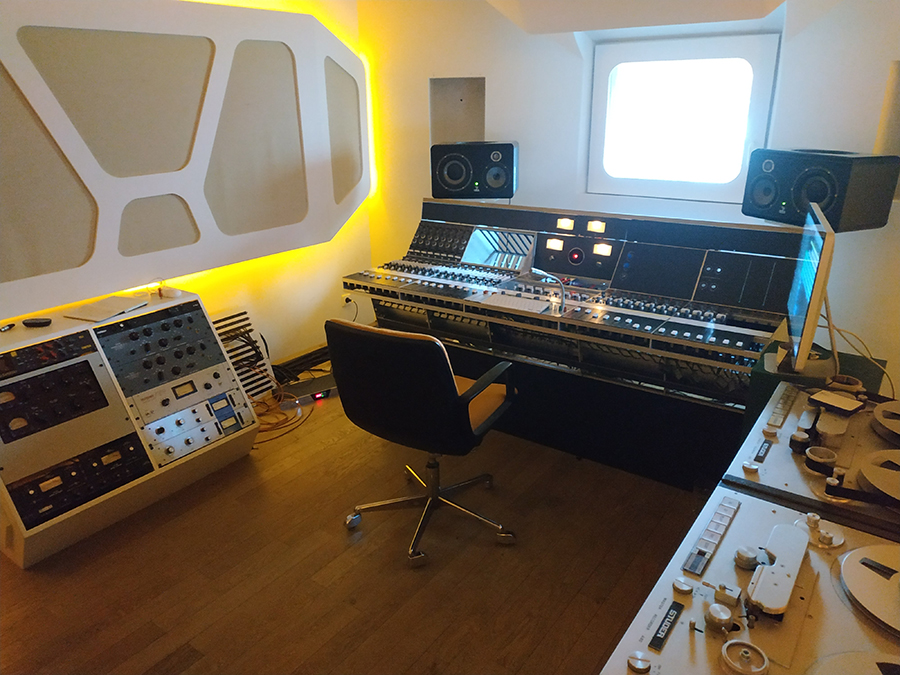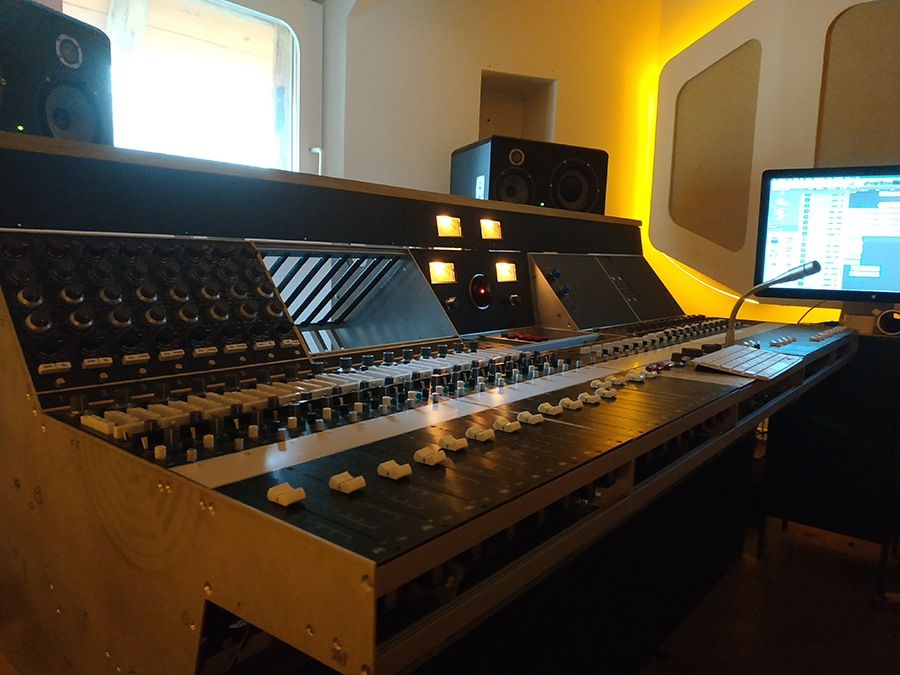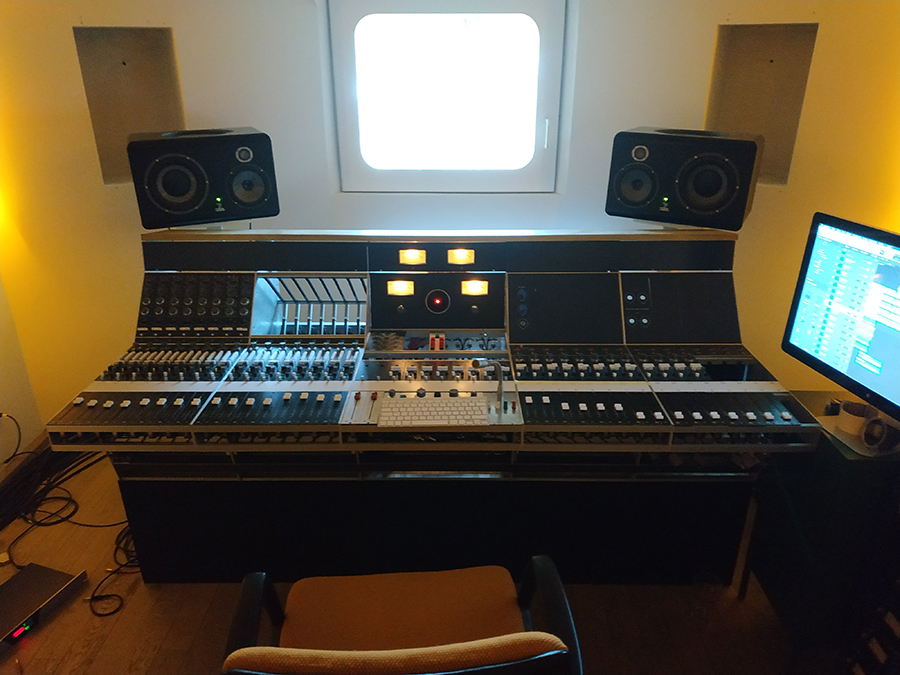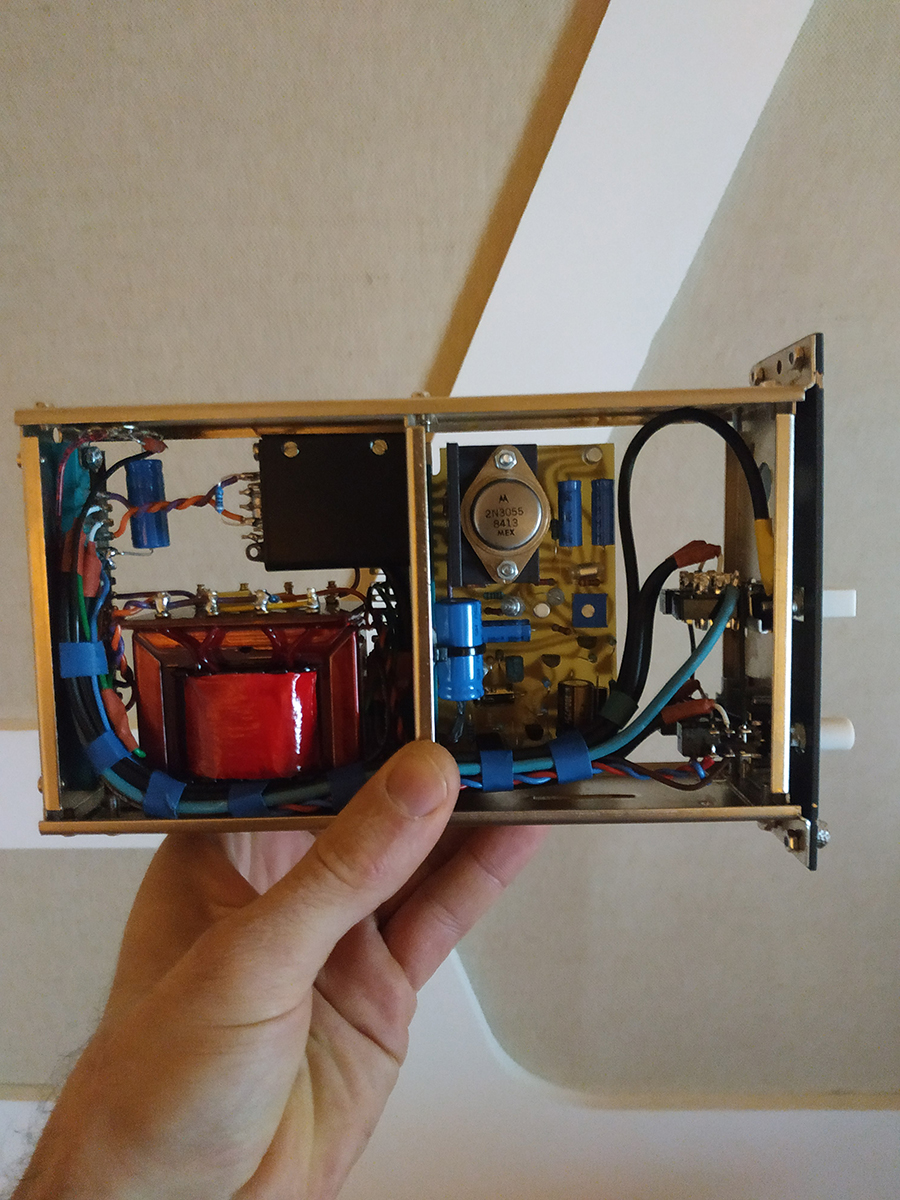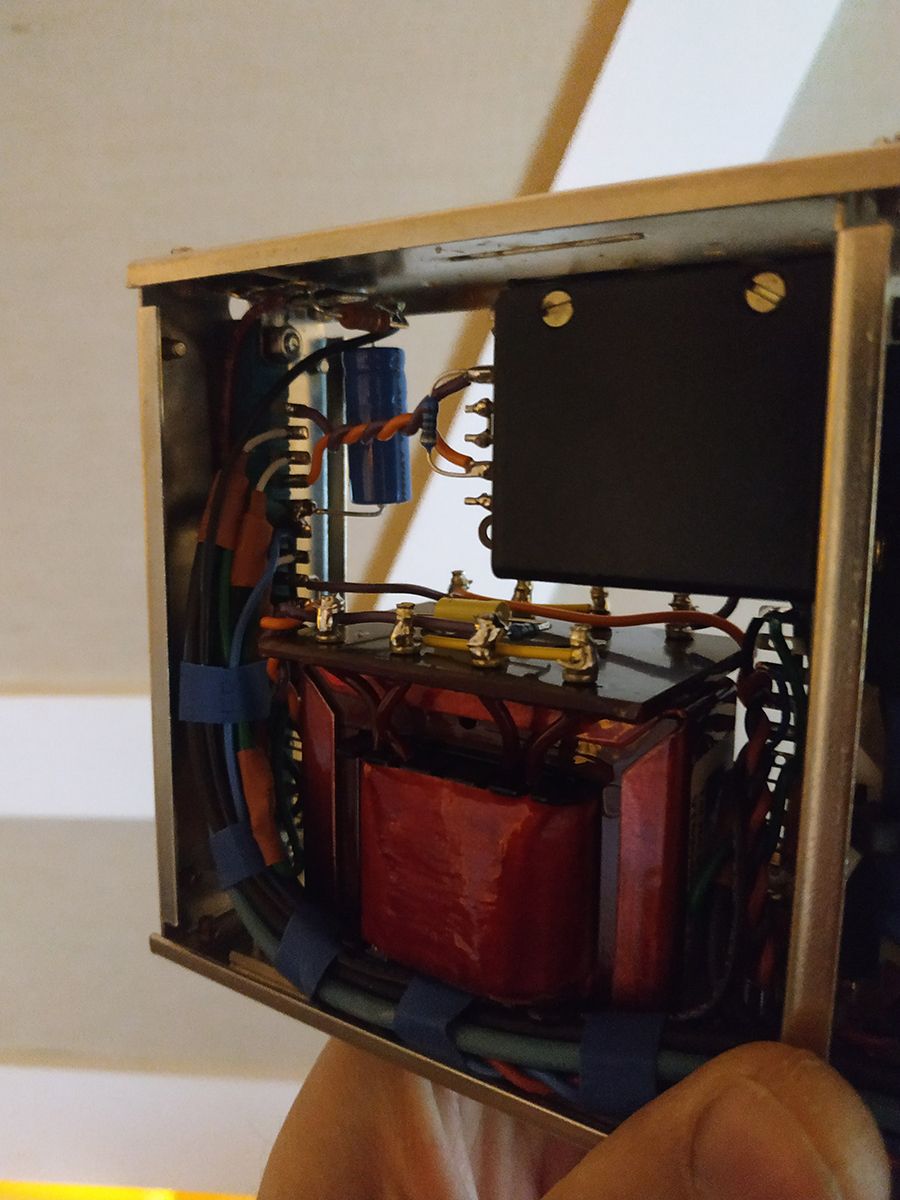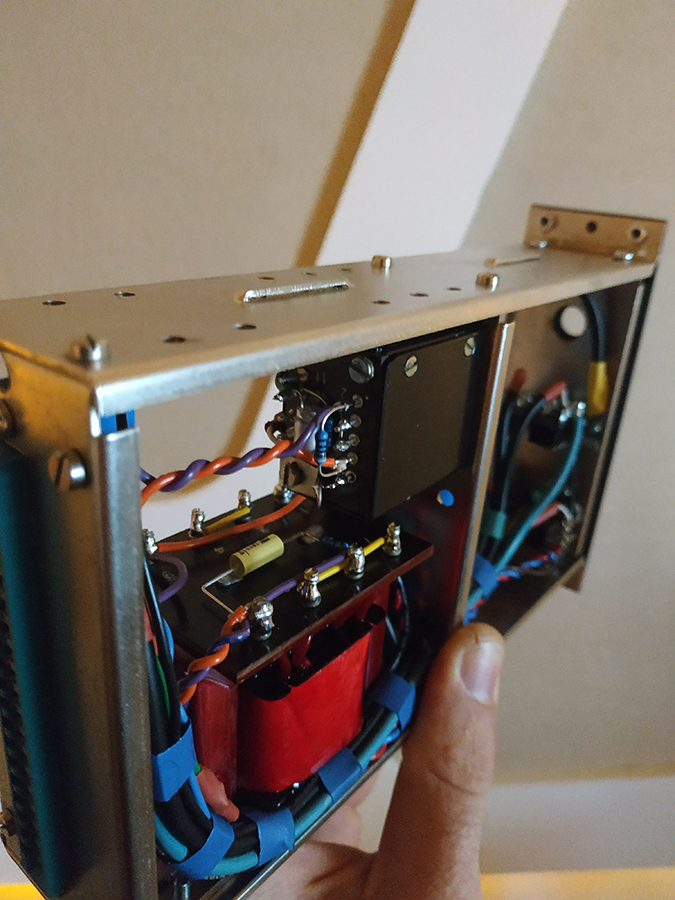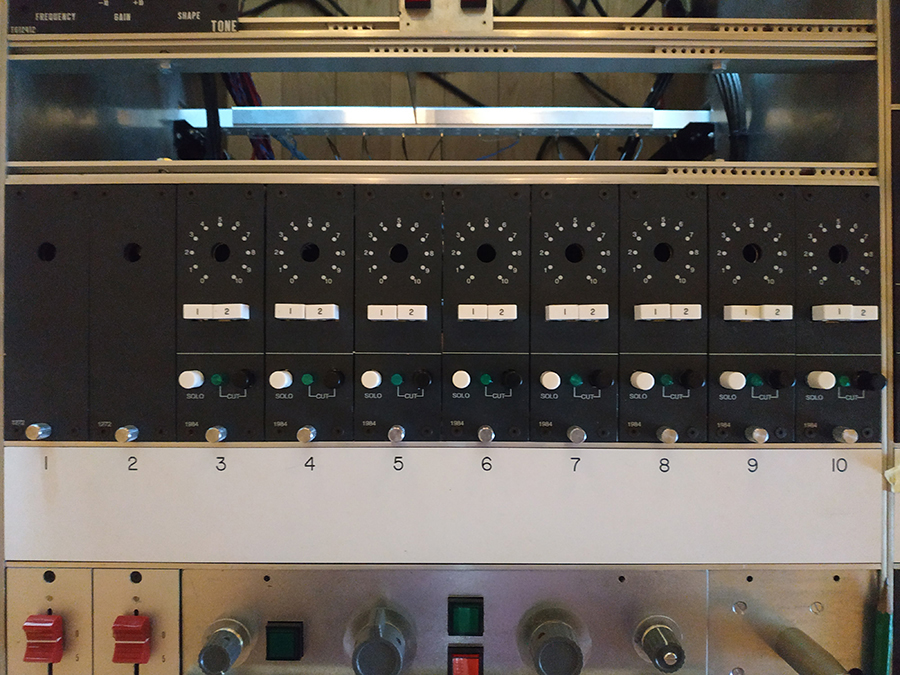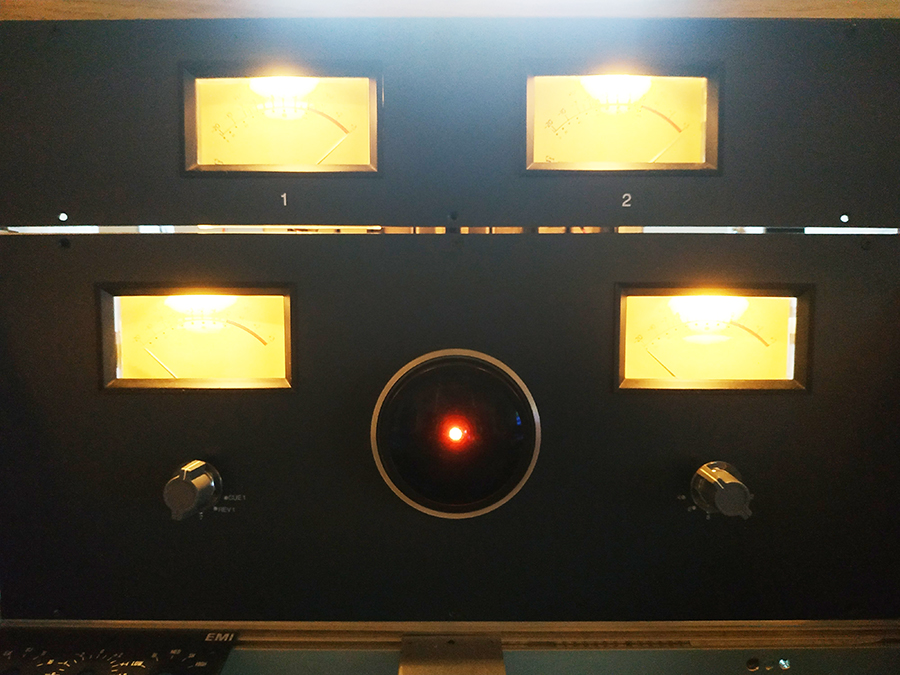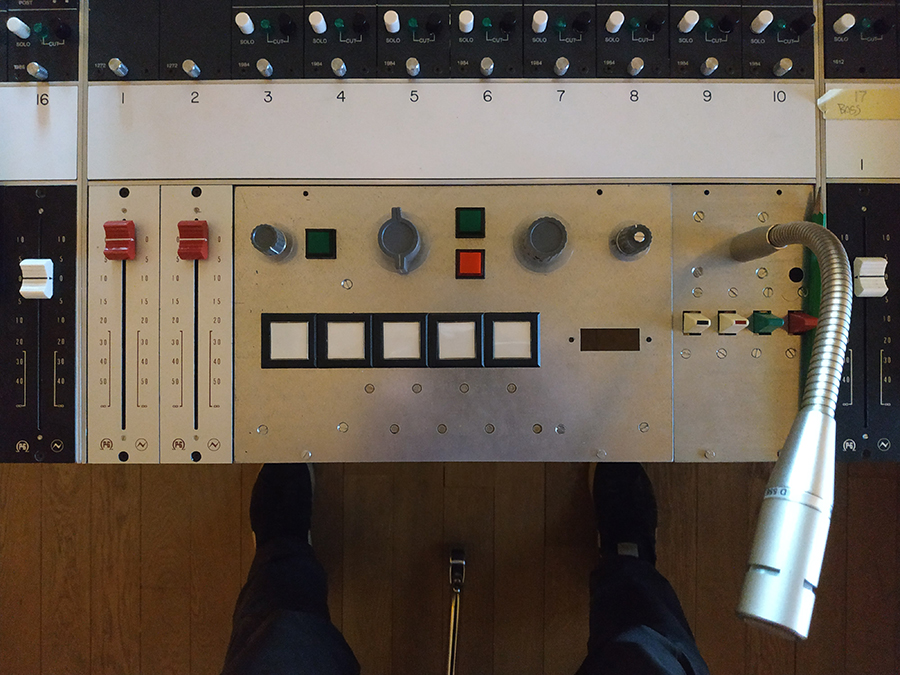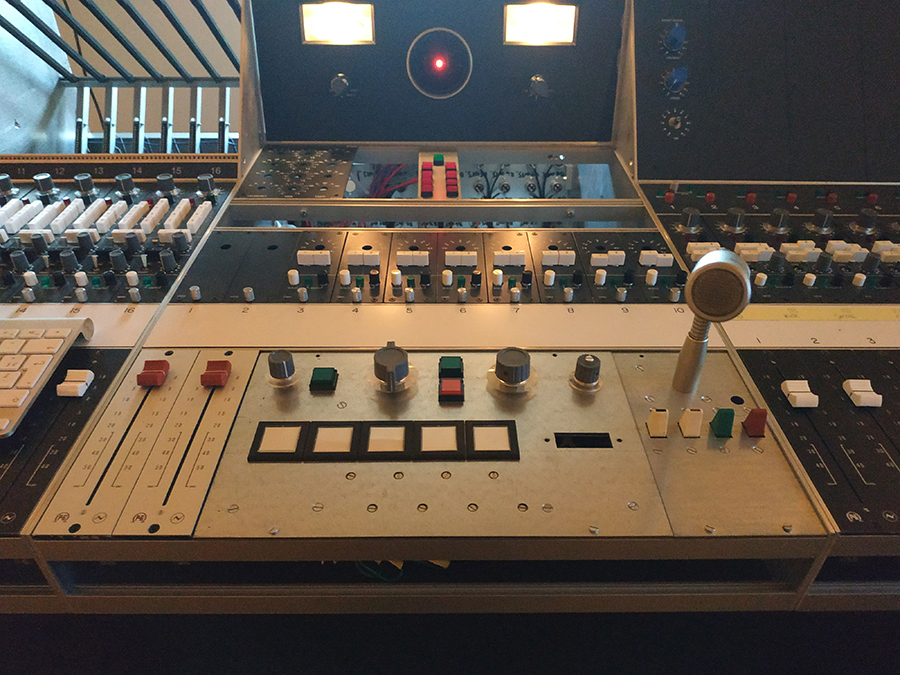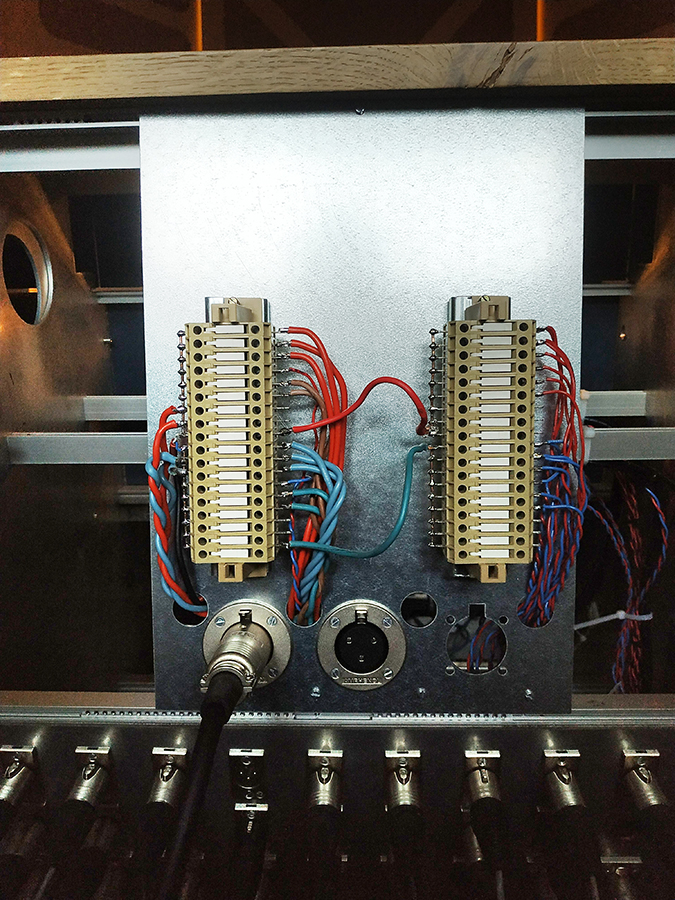So I spent the last two months working 70 hours a week on that bloody thing... Boy, what a trip!
But hey, here it is, in its natural environment:
As you can see there are many things left to do. I'm missing 6 input modules which I should get in the next few weeks (I have two more on my bench that should be installed within days).
I'm also obviously missing the arm-rest which will be installed next week, along with some of the 3mm aluminium bars that separate the penthouse panels top and bottom and the bent aluminium plates that will cover the front of the desk, under the faders. Those are all being built and should be installed within the next couple of weeks.
There is an empty space above the bus amp section that will get a reverb return switch bank, and above that, a pair of EMI TG 12412 EQ inserted in an M/S matrix and a pair of TG 12413 Limiters. This is all in the works and should be finalized in the next few months.
About what I've been doing, now

I built all 15 bus amps ( 8 main busses, 2 monitor, 2 cue, 2 rev and 1 solo). Busses 1 and 2 are plain 1272s with original LO1166 transformers. Busses 3 to 8 are 1272s as well but the insert return comes back into the module to switches feeding bus 1 and 2 and the solo bus. This is a work in progress, as right now the feeds are sourced from 10K:600 transformers located after the insert return, so my feed level is -8dB... which means I'm going to have to build more amps.
The 2 monitor busses (aka tape return busses), which also have feeds to busses 1, 2 and solo, don't have this problem, as the feeds are taken from the unbalanced output of the amp (didn't need inserts on those).
This is what those hybrid amp/routing modules look like:
As you can see, I'm missing the volume pot/fader on those. I just haven't found a 25mm shaft 5K log pot that I like yet, so the amps are just maxed out at the moment.
All my busses have various numbers of feeds, so I ended up terminating them so they would all have an impedance of 340 ohms, this way they would all have the same noise floor. 340 ohms is a good bus impedance, with good speed/distortion compromise.
I have meters hooked up to busses 1 and 2 permanently, and auxiliary meters that can monitor the rest of the busses via 2 Elma 5 position switches. And good old HAL9000 is here to freak out everybody in the room and also serves as a solo indicator ( the eye turns off when a solo switch is engaged).
Here's the simple yet great monitor section (the front panel is being built at the moment):
It's very simple, a 6 position input selector Elma switch (ext, cue, rev, bus 1-2, Mon 1-2, 2T)go into the solo relays, into a pair of 10K600 transformers, into a pair of relays that switch in 10k resistors for dim, into a pair of relays for mute, into the 47 step attenuator and to the speaker outputs. The DIM and MUTE relays are commanded by the two big EAO switches between the input and the attenuator switches.
What I like about this monitor section is that it's totally passive, thus I can monitor in the control room even when the console is off (the DIM and MUTE buttons do need power to feed the relays, but I hardly use them anyway).
The input selector switch also feeds the JLM headphone amp (knob on the right) which is built but not installed yet, and the studio speaker outputs, through the Studio follow monitor switch (green one on the left), another pair of 10K:600 transformers and the 10K volume knob on the left.
I'll try to snap a picture of the wiring when I get a minute!
This is the talkback panel (panel being built as well):
The far left switch is the talkback to cue switch. It feeds both cue busses. Those old Ericsson switches are really nice, they are momentary on one side and latching on the other, with a 4PDT switch for each position. That means you can't really use both positions for the same function though, as one side would remain closed as the other opens, so I use this one to activate a relay to feed the talkback to the cue busses ( The AKG D558 talkback mic is amplified by a JLM Talkback amp). The second from left switch sends the talkback signal to the studio speakers and is inserted between the follow monitor switch and the 10K:600 transformers, so it overrides any program you would send to the studio.
The third (green) switch is not wired yet( soon

), it is the studio talkback switch. It will feed the solo bus in the momentary position and the 2 monitor (tape return) busses in the latching position. The REC function on the tape machine remote will activate a relay that will turn off the studio talkback to monitor busses feeds. This way you can hear what's going on in the room up to the moment you hit REC. I'm quite proud of this one

.
The far right (red) switch will activate a cue light in the room.
Here is the distribution panel, built in the same fashion as on original neve boards:
The Main left distribution block is hooked up to a 12amp International Power supply. It feeds all the audio modules with 2,5mm2 wire. Note the 3 twisted blue wires, those feed the B- 0V copper bar.
The right block is feeding all the relays, bulbs, leds as well as the talkback amps. It is temporarily hooked up to the main distribution block as I'm waiting for the accessory 5 amp PSU to be delivered. The center Amphenol plug is for the +/-28V psu for the EMI modules.
Every single audio connection to the outer world is done with XLR plugs.
I couldn't be happier to have made this choice, as it makes troubleshooting, interfacing and overall visualization so much easier! This allows the inside of the frame to be super super clean and not so crowded.
The bulk of the thing has been operational for a couple of weeks now, and i've already run a couple of easy sessions with it. So I guess at this point everybody really wants to know how it sounds, right?
Well, it does sound great but I won't get too hyperbolic about it. It is a life changer for many reasons, many of which are down to ergonomics (like having a proper tape return section), having everything at hand and not needing outboard pres anymore. I've had a couple of 1073 eqs at hand for years, but I never really got to know the eq as well as I have in the couple of weeks, having it default on every channel (well, I only have 8 at the moment but i've only been doing 8 track sessions so far).
As you all know, a studio is a system, and a console ain't no magic bullet. I already had a great console before this one and I was already tracking through 1073s, so the sound of my studio hasn't changed dramatically just by turning the thing on. Or maybe it is just too early to tell. Probably so. It's just that i seem to get the results I want much faster, and that mostly comes down to ergonomics (and having all those stages to saturate certainly helps a bit).
That being said, I did an experiment this morning.
I made a rough 6 channel mix of a project I'm working on in Logic, bounced it ITB and then split the 6 channels to 6 inputs in the console, faders at 0, so the mix would be exactly the same, with added Neve summing.
This is just 1 track of drums (I record my drums to 1 track

), bass, stereo room mics and two guitars. To sum up the architecture, all tracks go each through one 1073, one routing module, the bus and the 1272 bus amp. That's 3 input transformers (all OEP transformers), two output transformers (bass and drum channels have marinair LO1166s in their 1073s, the 2 1272 do too, all 4 other channels have Carnhills in the 1073s) and 6 neve gain stages.
There are 4 passes, all I'll tell you is that one of them in ITB. They're very short clips, to make ABing fast and effective. I also gave them random names, or everyone would just like "A" or "1" better haha.
Here's the link, can't wait to read your guesses
 https://we.tl/t-XvnZiHIVil
https://we.tl/t-XvnZiHIVil
